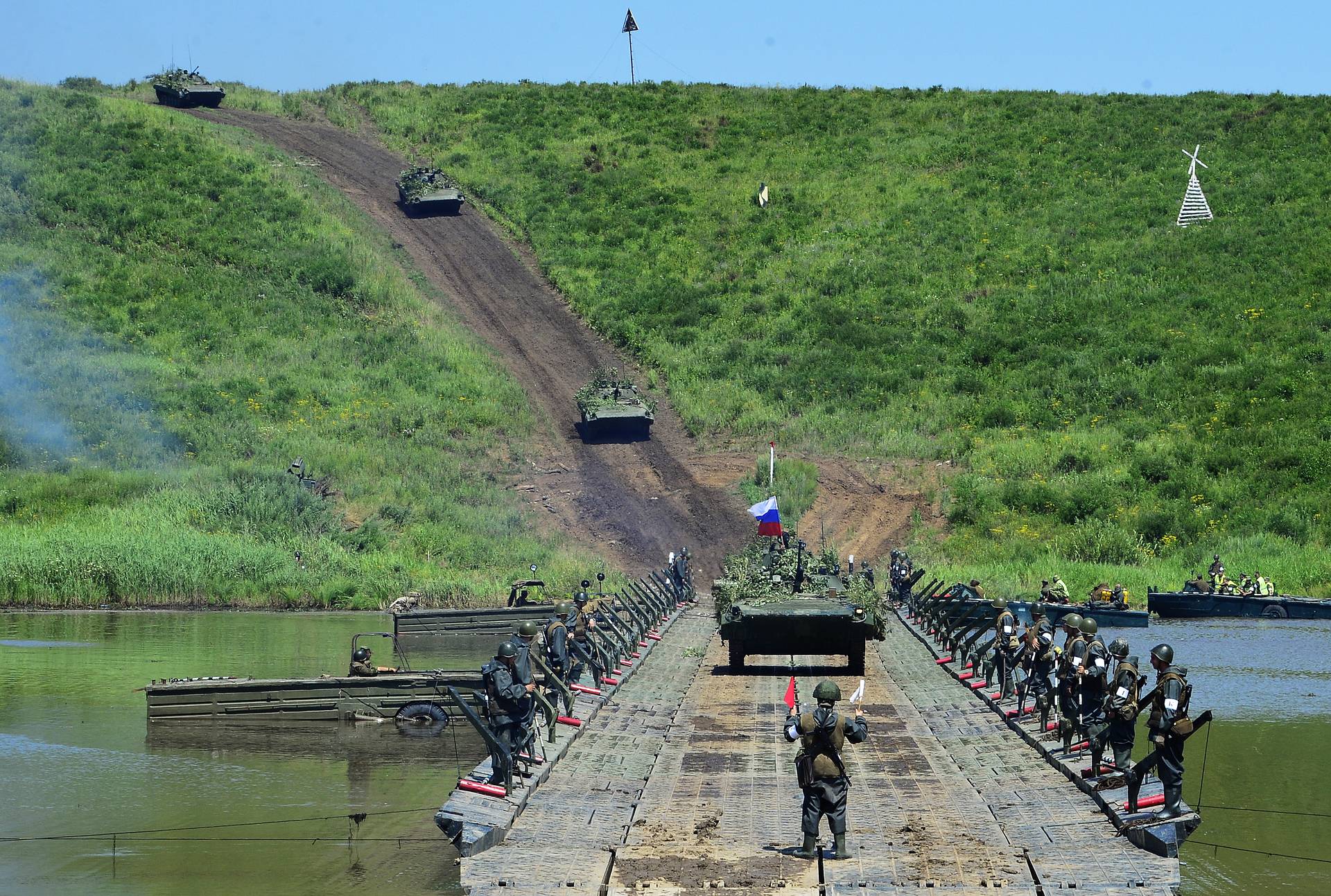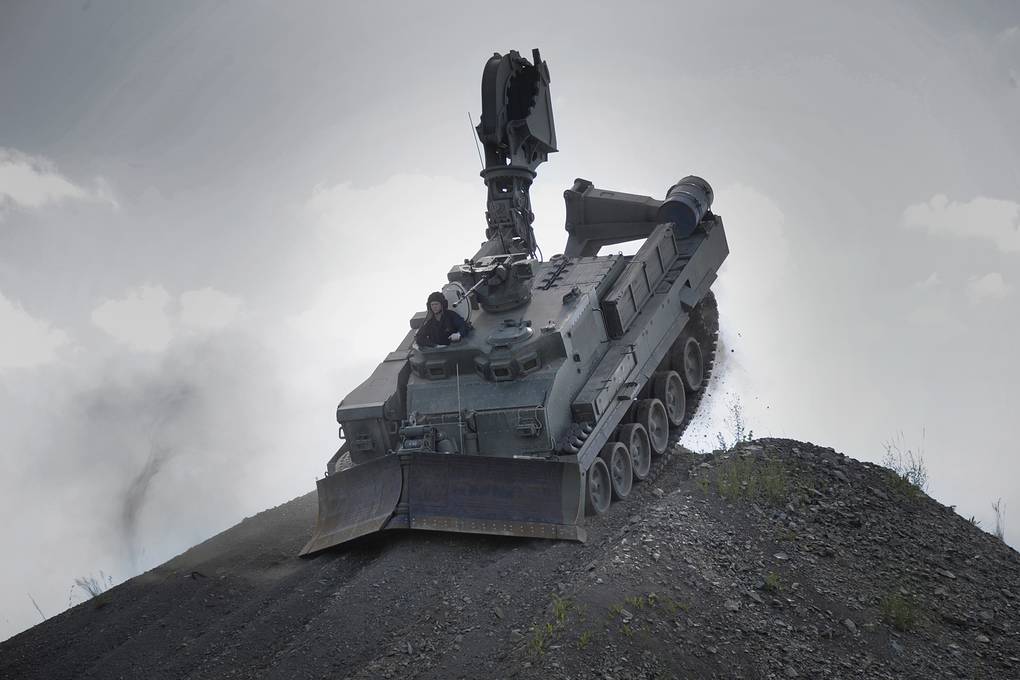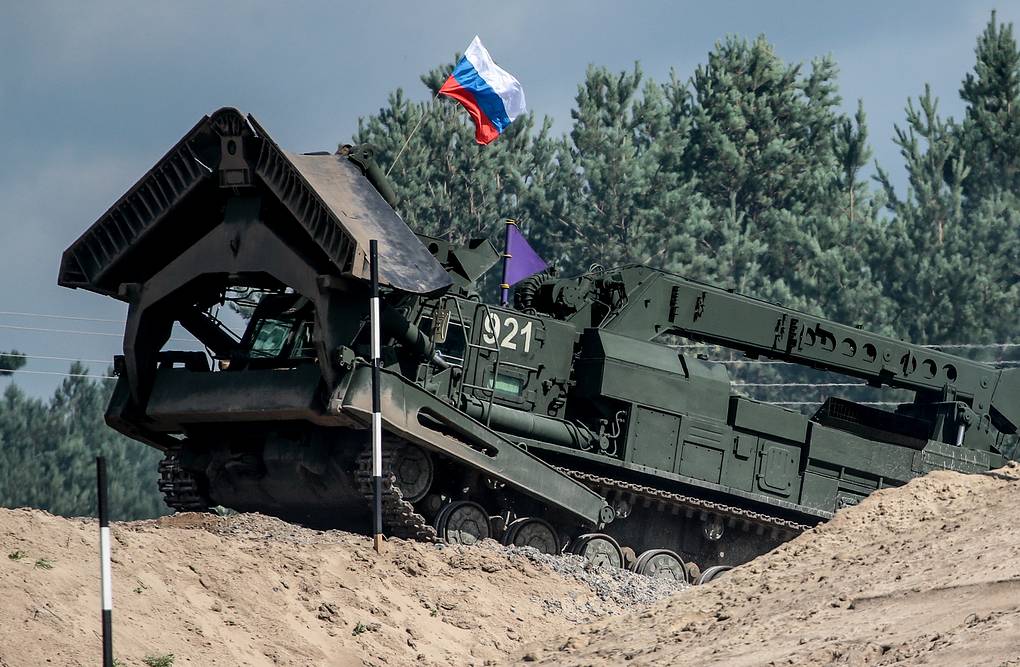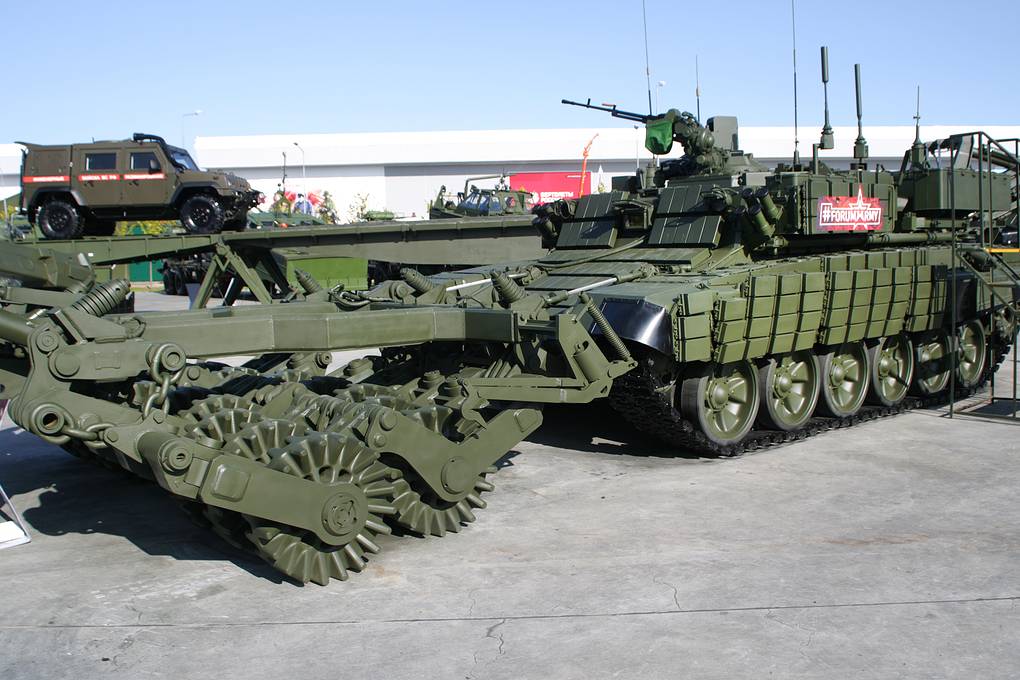January 21st was the Day of the Engineering Troops, celebrated in the Russian Armed Forces.
It is established by the decree of the President of the Russian Federation from September 18, 1996, and it is included in the list of professional holidays and memorable days of the Russian army by the decree of Russian President Vladimir Putin of May 31st, 2006.
In 2019, the Russian Engineer Troops received over 500 units of engineering equipment, in 2020 it is planned to supply them with 600 more pieces of various equipment.
The goals and current status of the Engineer Troops is the following:
- Engineer reconnaissance of the enemy, terrain and objects;
- construction (arrangement) of fortifications (trenches, ditches and communication trenches, shelters, bunkers, dugouts, etc.) and organization of field deployment of troops (residential, logistical, medical);
- organization of engineering obstacles, including installation of mine fields, production of blasting, organization of non-explosive obstacles (anti-tank ditches, scarps, counterscarps, stakes, etc.);
- clearance of areas and facilities;
- preparation and maintenance of traffic routes of troops;
- creation and maintenance of ferries across water barriers, including construction of bridges;
- extraction and purification of water in the field and others.
In peacetime, these units clean the area of explosive objects, participate in the aftermath of technological accidents, disasters and natural disasters, and prevent the destruction of bridges and hydraulic structures during ice drifts.
Separate engineering brigades are part of the Western, Southern, Central and Eastern military districts; Marine engineering battalions are a part of the Northern and Pacific fleets of the Navy.
The Black Sea and Baltic fleets comprise separate marine engineering regiments.
Also, a similar regiment was created to ensure the operations of the Arctic fleet.
By 2021, engineer-sapper and pontoon-bridge brigades are planned to be created in each combined army.
The Chief of the Engineering Troops is Lieutenant General Yuri Stavitsky, he’s assumed the post since 2010.
The training of officers is conducted by the Combined Arms Academy of the Russian Armed Forces in Moscow and its branch, the Tyumen Higher Military Engineering Command School named after Marshal A.I. Proshlyakova.
The junior specialists are trained by the 187th Pskov Order of the Red Star and the 210th Guards Kovel Red Banner Interspecific Regional Training Centers (the latter is located in the Nizhny Novgorod Region).
The 66th Interdepartmental Methodological Training Center is preparing Russian mine clearance specialists. In August 2014, a special unit was established for foreigners – the International Mine Action Center Nakhabinsk near Moscow. The center’s military personnel are involved in humanitarian demining operations outside the country.
Specialists took part in the demining activities in the Syrian cities of Palmyra, Aleppo and the Deir ez-Zor. From 2016 to July 2018, more than 6.5 thousand hectares of territory, 1.5 thousand km of roads, 17 thousand buildings were checked, 105 thousand explosive objects were neutralized. The center also trained more than 1,200 Syrian sappers.
From October 2018 to March 2019, the detachment cleared more than 100 hectares of territory in Laos from ammunition during the Vietnam War.
In January 2020, the Eastern Military District began the formation and preparation of integrated flood control groups, which in the spring will help to protect the settlements of the Far Eastern Federal District.
In 2019, the troops received more than 133 thousand modern kits, 17 dynamic simulators, over 500 units of engineering equipment (trawls, mobile sawmills, deployment kits for temporary roads, a pontoon park, power plants, cranes, etc.).
Among the latest engineering tools adopted in 2019 are the BMK-MT and BMK-MO towing and motor boats, mine detectors IMP-3, MG-1I and the combined PPO-2I. In 2020, it is planned to supply more than 600 units of engineering equipment.
A universal armored engineering vehicle UBIM (Universal Armored Engineering Vehicle) (created by Uralvagonzavod Corporation based on the T-72B3 battle tank) and a new MTU-2020 tank bridge spreader (will allow for the transfer of Armata T-14 battle tanks) are being tested.
Prospective models of engineering weapons are being developed by the Central Research and Testing Institute of Engineering Troops of the Ministry of Defense of the Russian Federation. Based on the results of the troops performing special tasks in the Syrian campaign, the development of promising engineering weapons was organized:
- multifunctional robotic mine clearance complex anti-tank mines (MRTK-RT);
- condenser explosive device (TPVK-43);
- induction mine detector (IMP-3), individual and group sources of electricity and other means that increase capabilities and expand the arsenal of troops.
In short, the history of the Engineer troops is the following:
- In 1701, a decree of Peter I was issued on the establishment in Moscow of the School of the Pushkar Order to train artillery officers and military engineers. Since 1702, the first miner units of the regular army began to be equipped with graduates of this school; in 1704 a pontoon team was formed. By 1712, a regiment of military engineers was formed.
- By the 1850s, engineering troops were separated from artillery; in 1870–1908, they included railway troops. By 1917, the number amounted to 6% of the total number of the Russian Imperial Army.
- After the October Revolution, during the organization of the Workers ‘and Peasants’ Red Army (RKKA), it included sapper companies and battalions of the disbanded regiments of the imperial army, in 1919 pontoon and electrical battalions were created and equipped, automobile units, camouflage companies, and a mine-demolition brigade other. Ten years later, full-time engineering units were available in all branches of the Red Army.
- The Great Patriotic War showed the important role of engineering troops in ensuring combat operations, in 1941–1942 there were ten independent combat engineer armies. Subsequently, they were reorganized into brigades. Three of these brigades (1st Guards Engineer Sapper Mogilevskaya, 2nd Guards Motorized Assault Engineer Sapper Novgorod and 1st Engineer Sapper Novgorod) were presented at the Victory Parade in Moscow on June 24, 1945.
- After the war, until the mid-1970s there was a technical development of troops, the structure of which was fully formed in the 1960s.
- Motorized rifle regiments had engineer-sapper companies, divisions and corps — engineer-sapper battalions, armies and districts — one or more engineer-sapper regiments, as well as specialized battalions or regiments — pontoon-bridge, transport-assault, road, bridge building and etc.
- Parts of the engineering forces were also centrally subordinate. In the second half of the 1970s, spending on military engineers was cut, as a result of which, with the outbreak of hostilities in Afghanistan, the Soviet army experienced problems with the engineering support of the battle. The situation was improved by increasing the number of engineering units several times.
- In 1986, engineering troops were involved in the aftermath of the explosion at the Chernobyl nuclear power plant.
MORE ON THE TOPIC:










Nice pictures.
Well done, man!!